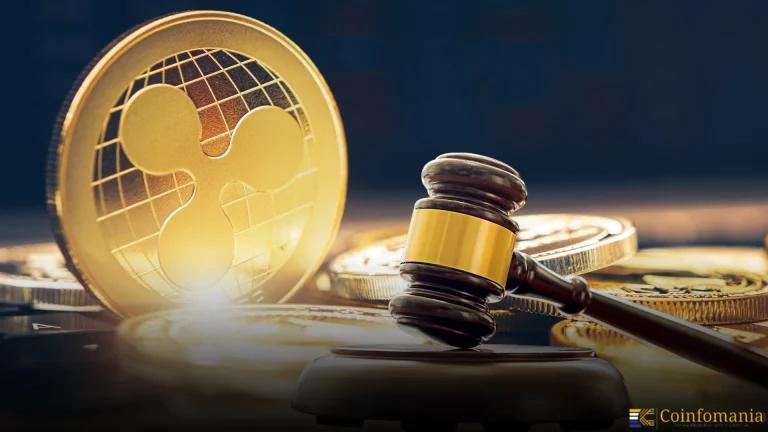Cryptocurrency Regulations in Peru (2025)
With that, Peru is standing cautious but open when it comes to crypto in 2025. It is not banned, and it is not recognized as legal tender. While the government does not ban involvement in crypto activities, crypto-related activities are allowed for individuals and business activities to take place, but with limited regulatory clarity, at […]

With that, Peru is standing cautious but open when it comes to crypto in 2025. It is not banned, and it is not recognized as legal tender. While the government does not ban involvement in crypto activities, crypto-related activities are allowed for individuals and business activities to take place, but with limited regulatory clarity, at least for now. That’s starting to change.
For investors, users, and entrepreneurs alike, it is necessary to understand Peru’s crypto regulations. Despite the legality of crypto trading, there are certain compliance requirements, like having an AML and taxation enforcement. Who knows what new legislation is to come about, and those in the space must watch their step.
Multiple players have a role in Peru’s regulatory landscape.
- SBS (Superintendency of Banking, Insurance and AFPs): Supervises financial institutions and AML.
- Central Reserve Bank of Peru (BCRP): Responsible for determining the country’s monetary policy and is examining a CBDC.
- SMV (Superintendency of Securities Market): Oversees securities regulation.
- SUNAT: The national tax authority watching crypto income closely.
Historical Context
Like everywhere else, cryptocurrency appeared in Peru around the same time: during Bitcoin era. It had existed in a legal gray area for years. However, since 2017, after adoption, regulators issued public warnings of the risks inherent in crypto, especially volatility and fraud.
The pivotal moment was 2021, when lawmakers introduced Bill No. 1042/2021 CR to regulate cryptoasset commercialization. While debated, it indicates that Peru is moving from a passive observer to an active rulemaker.
Moreover, crypto adoption quietly grew to 1.2 million Peruvians who currently own digital assets. Thus, the grassroots growth created pressure for regulators to catch up, in particular with the rise of scams and informal platforms.
Current Regulatory Framework
Key Regulatory Authorities
In Peru, there isn’t yet a united crypto law, but there are currently four main institutions that affect the environment surrounding it:
- SBS: Regulates and supervises AML of financial entities operating crypto companies as VASPs (Virtual Asset Service Provider).
- What SMV does is check if crypto products are considered securities for legal purposes.
- Although it has no direct control over the crypto and differentiates it from legal tender, it is a partner in the CBDC pilot for the country.
- SUNAT: Oversees taxation of crypto gains.
Licensing and Registration
At the moment, set forth by the law, crypto businesses don’t need a license to operate. Most exchanges can (for now) operate in the same way other business, do. This pending crypto bill contains a Registry of Cryptoasset Exchange Platforms, also known as The RUPIC, which will come under SBS licensing.
AML & KYC Requirements
Crypto exchanges and wallet providers in Peru are now compelled to adhere to AML/KYC laws thanks to Decree No. 006-2023-JUS. What this entails is checking user identities, reporting suspicious activity to Financial Intelligence Unit (UIF), and even designating compliance officers.
Taxation
SUNAT considers crypto profits taxable. Although there’s still no crypto tax law dedicated to cryptocurrencies, usually the general rules apply.
- If crypto profits are considered capital gains (“second category income”), then tax should be applied at the rate of the value of this income.
- Crypto related income is subject to corporate tax by businesses.
- Even though crypto buying/selling is unrelated to VAT (IGV), it may relate if crypto is used in commerce.
While SUNAT is trying to force explicit tax legislation, you will soon have more clarity.
ICOs & STOs
However, there are no specific rules in Peru for ICOs or STOs. A token that has the hallmarks of a security might come under SMV purview. However, right now there is no formal ICO framework and issuers run the risk of doing so. The goal of the crypto bill is to consider the token platforms as obliged entities under the AML.
Peru’s Crypto Policies
Crypto Usage
Private transactions with crypto are legal, but crypto is not legal tender. No one is forced to take the crypto, but merchants might voluntarily. Remittances — or freelance payments or P2P commerce — can be settled in crypto, but crypto is not widespread and not government-endorsed.
Crypto Mining
Mining is legal and unregulated. However, there are no licenses needed unless it becomes large enough to require monitoring under the auspices of industrial or environmental legislation. Costs of electricity are moderate and therefore, Peru is not a big mining hub yet.
Government Initiatives
In 2024, the BCRP created a CBDC pilot to foster financial inclusion through a digital sol. Other areas in which the government has tested the blockchain in public procurement, land registries and social programs is to enhance transparency.
Penalties
However, crypto activity itself is not criminalized; however, there are penalties associated with non compliance.
- Fines and sanctions are applied for violation of AML (for instance failing to conduct KYC).
- It might result in fraud charges for running a promotion for unlicensed crypto investments.
- Crypto income tax evasion penalties are equal to the tax law penalty.
Country’s Approach to Crypto Innovation
However, Peru has a regulatory sandbox, but it is only open to licensed entities. In most cases, startups not registered or licensed as a regulated entity can’t participate, except that they are working with the regulated player.
Still, crypto use is going organic. Blockchain is used locally for efficiency and a few retail merchants accept stablecoins such as USDT. Additionally, there are local exchange points, such as Buda.com, Buenbit, and Agente BTC operating in the market.
What’s more, the government is supportive of blockchain, though it is cautious about crypto trading itself. Peru is leaning toward controlled innovation in the CBDC pilot and use of blockchain in governance.
Notable Challenges and Issues
Regulatory Gaps
The fact is that Peru doesn’t have a dedicated crypto law, and as such, it works in an area of legal vacuum. Crypto users have no protection and exchanges are unlicensed. It causes uncertainty for businesses and hampers institutional adoption.
Enforcement Challenges
Finally, AML rules do exist, but there is no enforcement. Many foreigners or Peruvians use P2P or foreign platforms outside the jurisdiction of Peru. However, the tech skills needed to monitor criminal flows are still being developed by the regulators.
Public Perception
Crypto has a mixed reputation. For some Peruvians, it is a way to save or invest; others associate it with scams or pyramid schemes. People are lacking education, which weakens them making them more viable victims for bad actors.
Regulatory Trends and Future Outlook
Recent Developments
- Crypto Bill 1042 is approaching congressman voting.
- On 20 May 2024, SBS released detailed AML rules for VASPs.
- Crypto tax is being explicitly proposed by SUNAT.
What’s Next?
- Expect the following if the crypto bill passes.
- Exchanges are to be registered and licensed.
- SBS’s enforced AML and cybersecurity standards.
- More clarity on how individuals and businesses will report taxes.
- Consumer protection measures, such as risk disclosures.
Global Impact
This is part of a wider trend across Latin America. With Brazil and Colombia crafting crypto laws, a similar pressure is being felt by Peru to realign regionally. The policies in Peru are also being influenced by international cooperation (FATF or IMF).
Conclusion
Peru is getting ready to be able to offer their cryptocurrency regulations. The country has not banned innovation as such, but doesn’t also have a full legal framework so people are still hesitant to trust financial institutions. That is changing—AML regulations are already here, taxation is becoming tighter, and oversight is becoming more formal.
Being a crypto user, investor, or crypto entrepreneur in Peru, one needs to be compliant. Prepare to track updates from SBS, SUNAT and BCRP, and new obligations. But thanks to smart regulation and pro innovation policies, Peru has what it takes to become a rising cryptocurrency player in Latin America.
Frequently Asked Questions (FAQs)
1. Is cryptocurrency legal in Peru?
Yes. It is legal for people and entities to hold and trade crypto. Nevertheless, it is not considered legal tender and in this way, nobody is obliged to accept it.
2. Are crypto exchanges operating in Peru licensed or regulated?
Not yet. Currently, the crypto exchanges operate without a formal license. However, Bill No. 1042/2021 – CR intends to introduce a registration framework known as RUPIC supervised by SBS.
3. Do I have to pay taxes on my crypto earnings in Peru?
Yes. SUNAT treats crypto profits as taxable income. The first is ‘second category income’ which includes capital gains, and the second is ‘corporate income’ in relation to declaring crypto related revenue for businesses.
4. Which AML and KYC requirements pertain to crypto companies?
As per Decree No. 006-2023-JUS, crypto exchanges as well as wallet providers must comply with AML/KYC. This entails, among other things, verifying the identify of the user, reporting suspicious transactions, and appointing compliance officers.
5. Is it possible to mine Bitcoin or any other cryptocurrency in Peru?
Yes. Unless it goes to industrial levels, mining is legal and unregulated.
6. Does Peru have a project to launch a central bank digital currency (CBDC)?
Yes. The Central Bank of Peru (BCRP) is conducting a pilot project of a CBDC (digital sol) to foster financial inclusion and transparency.
7. Are ICOs or STOs allowed in Peru?
Not explicitly regulated. ICOs/STOs have no dedicated legal framework, but tokens in the likeness of securities could be in the SMV’s purview.
8. Can you use crypto for making purchases in Peru?
Yes, privately. Not many do, and it especially isn’t government backed, and most are crypto ones that accept USD holders (especially USDT). It can be used for remittances, freelancing, P2P trades etc.
9. Are there any penalties for someone who doesn’t follow these crypto regulations?
Failure to comply with AML rules (such as KYC) will attract fines. Fraud charges or tax penalties exist for promoting unregistered crypto investments or avoiding taxes.
10. Is Peru supporting crypto innovation?
Cautiously, yes. Although trade is loosely regulated, Peru supports blockchain innovation with pilots in procurement, land registry and social programs. Nevertheless, its regulatory sandbox only applies to licensed financial entities.
Follow us on Google News
Get the latest crypto insights and updates.
Related Posts

Ripple Highlights Custody as Key to $18.9T Tokenized Assets by 2033
Shweta Chakrawarty
Author

Hong Kong SFC Issues New Custody Rules for Crypto Platforms
Shweta Chakrawarty
Author

South Korea and Vietnam eye $150B trade despite Trump tariff
Shweta Chakrawarty
Author